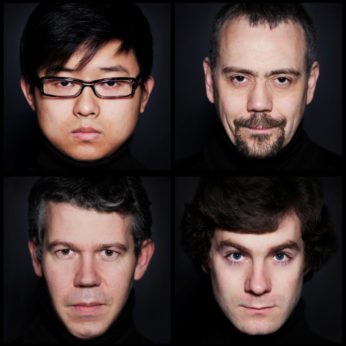The piece has been properly performed when the hairs of the bows are torn ragged by the end. Ligeti on performing style in his Second Quartet
On listening to Ligeti’s music, you are immediately aware that you are in the presence of greatness, whether you understand him or not. He spent his formative years in the claustrophobic atmosphere of communist Hungary, completely cut off from the outside world, isolated even from other Eastern Bloc countries. Official art was Socialist Realism, a cheap kind of art aimed at the masses and designed to promote political propaganda. There was a blanket ban on all modern art and literature and even Bartók, who was considered the great national composer, was censored. Only his non-dissonant and conciliatory works were performed, the Concerto for Orchestra, the Third Piano Concerto and the folksong transcriptions.
So, like Shostakovich, Ligeti wrote for his bottom drawer and, as Ligeti himself says, to work for one’s bottom drawer was regarded as a honour. The Second Quartet is now over thirty years old and was written twelve years after Ligeti fled from Hungary in 1956, but it still packs a mighty punch, a sure sign that it will last. In those twelve years his way of thinking as a composer had been turned upside down as a result of his contact with composers such as Stockhausen, Boulez and the avant-garde techniques being explored at Darmstadt and Cologne.
The composer writes that there is no longer any motivic writing in this music, no contours, only sound textures, which are sometimes frayed and almost fluid (as in the first and last movements) and at other times grainy and machine-like (as in the middle pizzicato movement).
The dynamic markings for each movement tell a vivid story. The Allegro nervosa of the first movement says everything and if you do not quite get the message then the opening pizzicato from out of the silence and the subsequent chain reaction will quickly fill you in. You could take it personally and call it a five minute nervous collapse or you could take it generally as a sound picture of the overloaded, scrambled late twentieth century brain. Scrambled and in need of sostenuto, molto calmo except that looks like being even more upsetting than Allegro nervosa. The pizzicato meccanismo is curiously less frightening than the other horrors of the mind, that we have encountered and will meet again in the brief, furious, brutal and tumultuous fourth movement. The Allegro con delicatezza is ambiguous but it seems to offer a way of coping with the tensions, which never go away, great delicacy, calmness and at the close a soupcon of wit.
